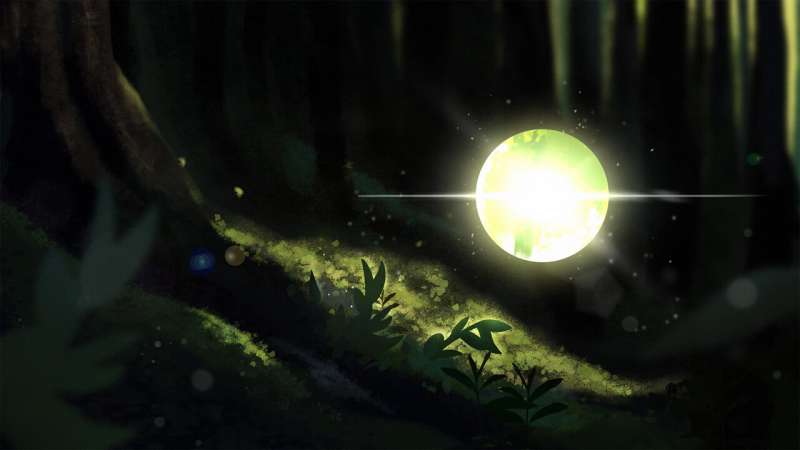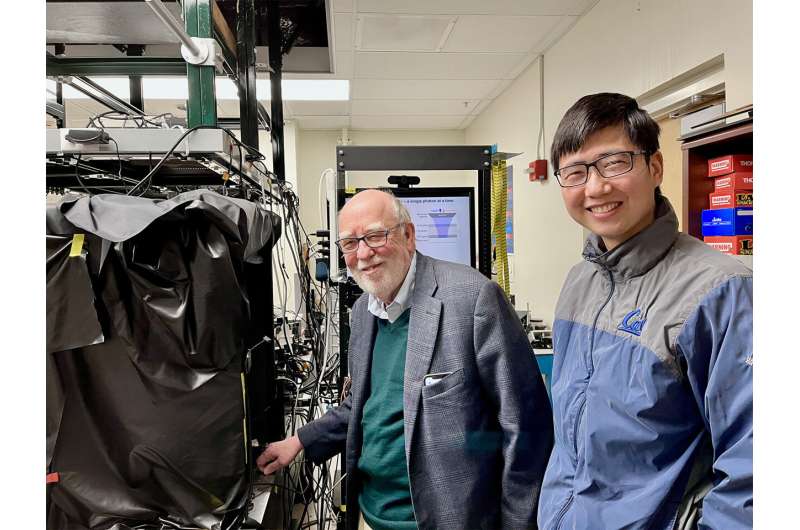This article has been reviewed according to Science X's editorial process and policies. Editors have highlighted the following attributes while ensuring the content's credibility:
fact-checked
peer-reviewed publication
trusted source
proofread
Photosynthesis starts with a single photon, study shows

Using a complex cast of metal-studded pigments, proteins, enzymes, and co-enzymes, photosynthetic organisms can convert the energy in light into the chemical energy for life. And now, thanks to a study published June 14 in Nature, we know that this organic chemical reaction is sensitive to the smallest quantity of light possible—a single photon.
The discovery solidifies our current understanding of photosynthesis and will help answer questions about how life works on the smallest of scales, where quantum physics and biology meet.
"A huge amount of work, theoretically and experimentally, has been done around the world trying to understand what happens after a photon is absorbed. But we realized that nobody was talking about the first step. That was still a question that needed to be answered in detail," said co-lead author Graham Fleming, a senior faculty scientist in the Biosciences Area at Lawrence Berkeley National Laboratory (Berkeley Lab) and professor of chemistry at UC Berkeley.
In their study, Fleming, co-lead author Birgitta Whaley, a senior faculty scientist in the Energy Sciences Area at Berkeley Lab, and their research groups showed that a single photon can indeed initiate the first step of photosynthesis in photosynthetic purple bacteria. Because all photosynthetic organisms use similar processes and share an evolutionary ancestor, the team is confident that photosynthesis in plants and algae works the same way. "Nature invented a very clever trick," Fleming said.
How living systems use light
Based on how efficient photosynthesis is at converting sunlight into energy-rich molecules, scientists have long assumed that a single photon was all it took to initiate the reaction, wherein photons pass energy to electrons that then trade places with electrons in different molecules, eventually creating the precursor ingredients for the production of sugars. After all, the sun doesn't provide that many photons—only a thousand photons arrive at a single chlorophyll molecule per second on a sunny day—yet the process occurs reliably across the planet.
However, "no one had ever backed up that assumption with a demonstration," said first author Quanwei Li, a joint postdoctoral researcher who develops new experimental techniques with quantum light in the Fleming and Whaley groups.
And, further complicating matters, a great deal of the research that has unraveled precise details about later steps of photosynthesis was performed by triggering photosynthetic molecules with powerful, ultra-fast laser pulses.
"There's a huge difference in intensity between a laser and sunlight—a typical focused laser beam is a million times brighter than sunlight," said Li. Even if you manage to produce a weak beam with an intensity matching that of sunlight, they are still very different due to quantum properties of light called photon statistics. Since no one has seen the photon get absorbed, we don't know what difference it makes what kind of photon it is, he explained. "But just like you need to understand each particle to build a quantum computer, we need to study the quantum properties of living systems to truly understand them, and to make efficient artificial systems that generate renewable fuels."

Photosynthesis, like other chemical reactions, was first understood in bulk—meaning that we knew what the overall inputs and outputs were, and from that we could infer what interactions between individual molecules might look like. In the 1970s and 80s, advances in technology allowed scientists to directly study individual chemicals during reactions. Now, scientists are beginning to explore the next frontier, the individual atom and subatomic particle scale, using even more advanced technologies.
From assumption to fact
Designing an experiment that would allow for observation of individual photons meant bringing together a unique team of theorists and experimentalists who combined cutting-edge tools from quantum optics and biology. "It was new for people who study photosynthesis, because they don't normally use these tools, and it was new for people in quantum optics because we don't normally think about applying these techniques to complex biological systems," said Whaley, who is also a professor of chemical physics at UC Berkeley.
The scientists set up a photon source that generates a single pair of photons through a process called spontaneous parametric down-conversion. During each pulse, the first photon—"the herald"—was observed with a highly sensitive detector, which confirmed that the second photon was on its way to the assembled sample of light absorbing molecular structures taken from photosynthetic bacteria. Another photon detector near the sample was set up to measure the lower-energy photon that is emitted by the photosynthetic structure after it absorbed the second "heralded" photon of the original pair.
The light absorbing structure used in the experiment, called the LH2, has been studied extensively. It is known that photons at the 800 nanometer (nm) wavelength get absorbed by a ring of nine bacteriochlorophyll molecules in LH2, causing energy to be passed to a second ring of 18 bacteriochlorophyll molecules which can emit fluorescent photons at 850 nm. In the native bacteria, the energy from the photons would continue transferring to subsequent molecules until it is used to initiate the chemistry of photosynthesis. But in the experiment, when the LH2s had been separated from other cellular machinery, the detection of the 850 nm photon served as definitive sign that the process had been activated.
"If you've only got one photon, it's awfully easy to lose it. So that was the fundamental difficulty in this experiment and that's why we use the herald photon," said Fleming. The scientists analyzed more than 17.7 billion herald photon detection events and 1.6 million heralded fluorescent photon detection events to ensure that the observations could only be attributed to single-photon absorption, and that no other factors were influencing the results.
"I think the first thing is that this experiment has shown that you can actually do things with individual photons. So that's a very, very important point," said Whaley. "The next thing is, what else can we do? Our goal is to study the energy transfer from individual photons through the photosynthetic complex at the shortest possible temporal and spatial scales."
More information: Graham Fleming, Single-photon absorption and emission from a natural photosynthetic complex, Nature (2023). DOI: 10.1038/s41586-023-06121-5. www.nature.com/articles/s41586-023-06121-5
Journal information: Nature
Provided by Lawrence Berkeley National Laboratory





















